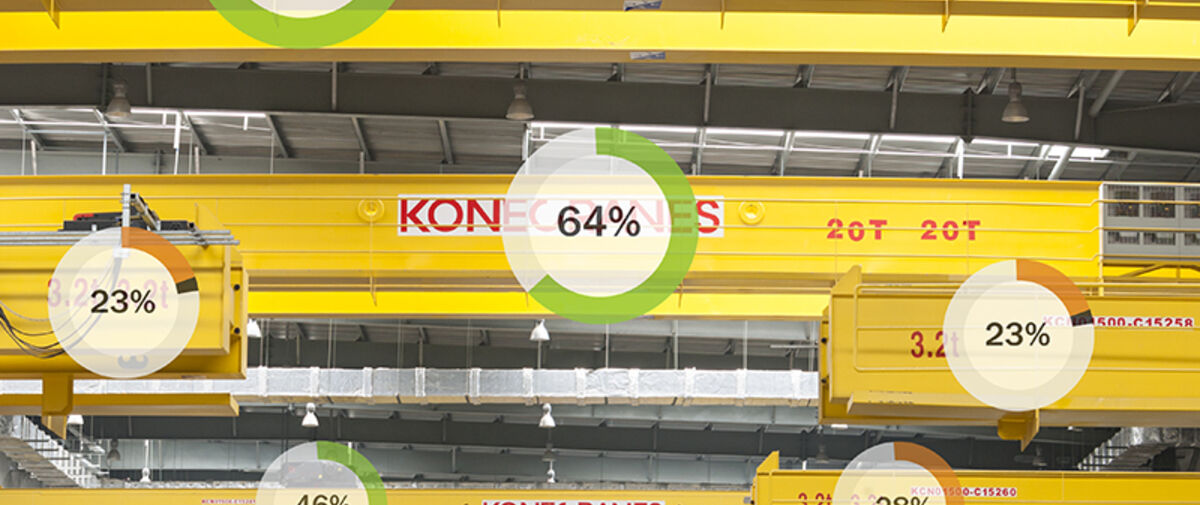How useful would it be if you could check the condition of your overhead crane, its critical components and its operating history whenever you wanted to? Would you want to be alerted if your crane was being operated incorrectly or outside of established safety parameters during any part of its work cycle? Instead of wondering when you should change critical components to protect production and profits, wouldn’t you rather receive an estimate of their remaining working life, enabling you to schedule maintenance at the most convenient time?
By Esa Kukkola, Product Manager for Remote Service
The good news is, these benefits are now available to crane owners who use Konecranes TRUCONNECT® Remote Monitoring to provide ongoing asset usage and operating information. TRUCONNECT Remote Monitoring is available on new standard crane equipment purchased from Konecranes, and can be retrofitted by Konecranes on most existing cranes, even if built by other manufacturers.
TRUCONNECT Remote Monitoring uses sensors and a diagnostic unit placed on the crane to collect usage and operating data such as running time, lifted loads, motor starts, work cycles and emergency stops–as well as many other data points. Remote Monitoring is available through an annual subscription–often as part of a Konecranes maintenance contract. Customers are able to view data on a single asset or an entire fleet through the secure yourKONECRANES.com customer portal via mobile phone, tablet or desktop connections–which means, from virtually anywhere.
Why is remote monitoring important?
Let’s focus on the hoist. Every hoist has an established Design Working Period (DWP), which shows the maximum run time for each design class. This can take anywhere from one to 100 years depending on how accurately the hoist is used according to its design criteria. If a hoist is heavily used close to nominal loads, its lifetime will be reduced substantially. Customers with TRUCONNECT Remote Monitoring can watch for premature wear on the hoist and its components such as the hoist brake and hoist motor contactors. They can also modify inspection and preventive maintenance schedules based on usage.
TRUCONNECT Remote Monitoring collects condition and usage data for select crane components and indicates safety-related occurrences, ranging from the trolley steel structure and hoist brake to overloads and motor stops due to overheating. It can also indicate when the crane is being operated incorrectly, or outside established norms. For example, motor over-temperature data may show excessive operation at slow speeds, too many starts in a short time frame, or a hoist motor that is being used above its design class. Accessing this information can help you pinpoint the cause of the problem and design the most appropriate response. In this case, it could be more operator training, additional maintenance to overhaul the worn parts, or a review to make sure that the equipment still suits your current production and operating demands.
Remote monitoring a game changer
Since TRUCONNECT Remote Monitoring was introduced in 2011, we have found that it has become a game-changer for crane customers. For example, if you receive an alert that a hoist brake is wearing faster than expected, you have an opportunity to change the friction materials before a load drop occurs, protecting both people and production.
In addition to improving safety and reliability, remote monitoring also has a profound impact on maintenance scheduling and planning. Replacing components when they need to be replaced–not before and not after–saves money. Also, the ability to plan an outage, rather than respond to a breakdown, safeguards production goals and makes life easier for everyone.
To date, more than 15,000 cranes worldwide in virtually every industrial sector have remote connections with TRUCONNECT Remote Monitoring. As the Internet of Things grows in global importance and commercial impact, we at Konecranes are convinced that TRUCONNECT will continue to be an important part of this discussion. So, can remote monitoring be a game-changer for your crane operation? We hope you’ll give us the opportunity to find out.
